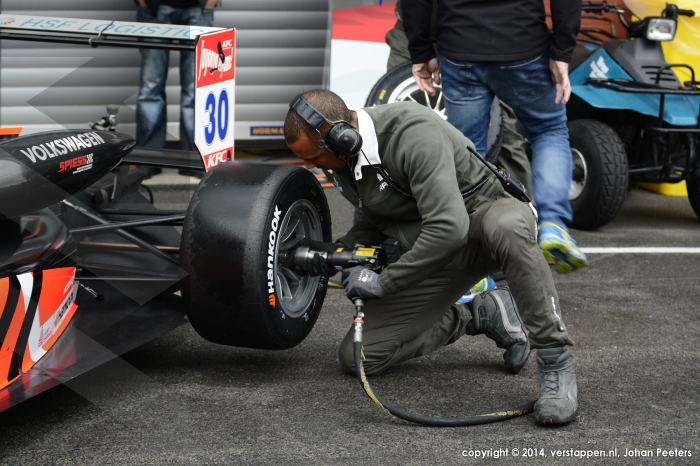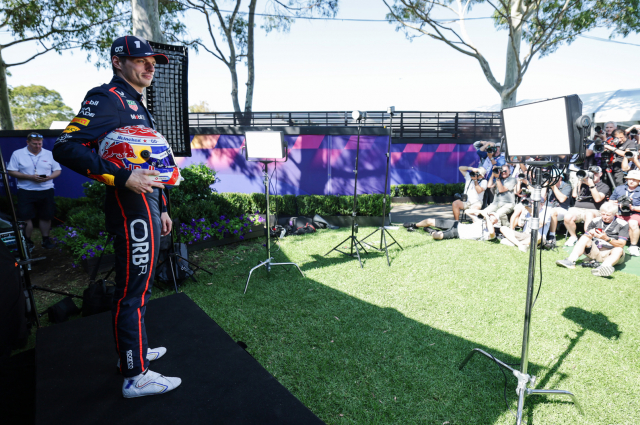Euro F3 rules and regulations
Published on 23 July 2014 by Stefan Meens
With a three week summer break interrupting the FIA Formula 3 European Championship, it is a good time to remind ourselves of the rules and regulations of this prestigious single seater championship in which Max Verstappen has won seven races so far.
Chassis:
All teams make use of the 2012 spec Dallara chassis, which is homologated until the 2017 season. During a weekend, the teams are not allowed to switch chassis.
Including the driver and his gear, the car has to have a minimum weight of 565 kilogram, excluding fuel.
Engine:
The year 2014 represents the beginning of a new era for Formula 3. With immediate effect, engines with a maximum capacity of 2,000 cc and direct fuel injection may be used. Engines must be normally aspirated. The horsepower output is limited by a 28 mm air restrictor (26 mm in 2013). A driver is allowed only one engine for the entire championship season including all events and official test sessions a team participates in. If an engine needs to be changed, the driver racing the respective car will receive a 10-position grid penalty for the next three races.
Tyres:
All teams exclusively use Hankook tyres (180/550 R13 front, 240/570 R13 rear).
The number of tyres available to a driver for a race weekend is limited. During the free practice sessions, he/she can make use of three sets, two of which are new and one used set. It does not necessarily matter when and at what event the old tyres were used, as long as they were allocated and used by the same car that aims to run them as a used set.
For qualifying and the three races, the driver is provided with three sets of fresh tyres. The number of wets is limited to three sets per race weekend.
Fuel:
Only fuel provided at the event by the FIA appointed supplier may be used throughout the event. The safety tanks made of rubber solely are fuelled with 102-octane fuel. Re-fuelling is interdicted during both the practice sessions and the races.
The teams have to consider the following: It must be possible to take a 1.0kg sample of fuel from a car at any time during the event. Furthermore, no refuelling, or removal of fuel, is permitted during any qualifying session, in between qualifying practice sessions if the interval between them is 15 minutes or less and during the race or at any time prior to the completion of post-qualifying or post-race scrutineering.
Testing:
Official tests were held at Budapest (4th/5th April) and Austria’s Red Bull Ring (8th/9th April). In October, the 7th and 8th, a further two test days will take place at Imola, Italy.
In addition to the official collective tests, team are allowed to test six days on an individual basis.
Qualifying:
Qualifying is crucial for the drivers as it determines their grid slot ahead of the weekend’s three races. Qualifying 1, held on Friday, decides the start grid for race 1. The second qualifying session, held after the first race, sets up the grid for both the second and third race. A driver’s fastest lap time counts for the race 2 grid and his second fastest lap time determines his position on the grid for race 3.
Event schedule (race weekend):
Free practice 1 (40 minutes, Friday)
Free practice 2 (40 minutes, Friday)
Qualifying 1 (20 minutes, Friday)
Qualifying 2 (20 minutes. Saturday after race 1)
Race 1 (100 km or 35 minutes, Saturday)
Race 2 (100 km or 35 minutes, Sunday)
Race 3 (100 km or 35 minutes, Sunday)
At some events, the organisers will deviate from the above schedule.
Points:
In all three races contested on a race weekend, the points for the 10 best-placed drivers are awarded according to the following system: 25-18-15-12-10-8-6-4-2-1. Guest drivers, who are not participating in the entire championship are unable to score points. Meanwhile, drivers racing a car that has been entered for the entire season can score points. Should a race be red-flagged before the leader has covered a minimum of 75 percent of the scheduled race distance, only half the points will be awarded. Should a race be red-flagged with less than two laps completed, no points will be awarded.



